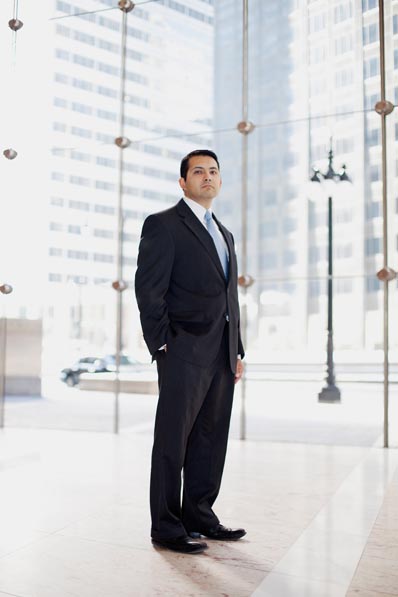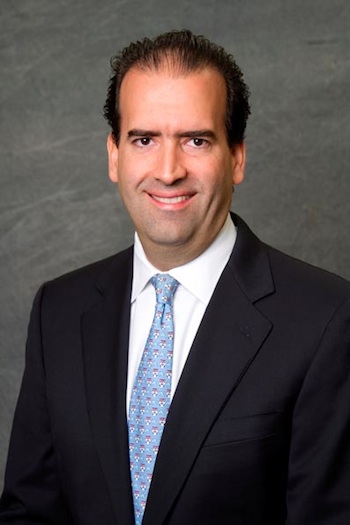When the company was being bought out and whittled down, Edwin Marcial didn’t bail. Staying, he shares how he’s helped make IntercontinentalExchange one of the world’s leading commodity marketplaces
In 1998, Edwin Marcial was at a crossroads. At that point, the young software engineer had been with Continental Power Exchange—a 30-person company focused on software systems for trading physical power—for a year and half. The company had just announced it would be bought out by a new CEO, whittled down to just a half dozen employees, and completely reimagined.
Marcial had job offers from several other successful tech companies, but on something of a gut feeling, decided to stay with the fledgling tech company that would become IntercontinentalExchange, Inc (ICE). “I could have gone to all these other companies that were doing well and rode out the wave, but I decided to stay here, even though it was nothing at the time,” recalls Marcial, now ICE’s chief technology officer. “I stayed because it was a challenge, and an opportunity to make my own way. Whatever we did would succeed or fail based on my decisions.”
Thinking Out Loud
Trading Words With
EDWIN MARCIAL
SUCCESS
When you set goals and rise up to achieve them.
INNOVATION
Being creative. Coming up with new and interesting ways to solve problems and challenges.
INTEGRITY
Being honest, forthcoming, and consistent in all of your interactions with the people around you.
LATINO
Family, friends, a warm, welcoming environment. Good food and music.
Fifteen years later, Marcial looks back on ICE’s growth and revels. “For the first few years, this was very much a start-up environment. Everyone here had breakfast, lunch, and dinner together at the office every day, … but it was fun because we were building something.”
What they ended up building was one of the premier exchange and clearing house operators in the world. In operation since 2000, Atlanta-based ICE operates as a digital marketplace for global commodity exchanges. In Europe and the United States, ICE matches up buyers and sellers of oil, natural gas, power, coffee, sugar, cotton, cocoa, and as well as other commodity and derivative products.
The small start-up has grown from six to a little over 1,000 employees. More than 50 percent of the world’s oil trades go through their markets, and in addition to its Atlanta headquarters, ICE has offices in New York, Chicago, and London. In fact, their growth has been so exponential, says Marcial, that they’ve recently announced their acquisition of the New York Stock Exchange, a company more than 200 years old that will add several thousand employees to ICE.
Part of what has given ICE an edge over the years, explains Marcial, is its commitment to designing and developing its own in-house software systems without relying on outside vendors or contractors. About half of the company’s 1,000 current employees work in ICE’s technology division, designing, developing, testing, and operating the systems that run ICE’s markets. Marcial oversees software design and development. “We have always been this way,” Marcial explains. “This business, especially as it has changed over the last dozen years or so, is very competitive in technology. We’ve always seen technology as a differentiator, setting us apart. We think it’s important for us to control our own technology, which is why we’ve built it in-house from the beginning.”
In 2004 and 2005, ICE was competing in common markets with the New York Mercantile Exchange (NYMEX). The NYMEX model still consisted of physical trading floors with shouting traders; ICE had always been electronic. It quickly became apparent that ICE was encroaching on its market hold, and NYMEX ended up partnering with the Chicago Mercantile Exchange (CME) to use its trading platform—systems that at the time, Marcial says, were much faster and more capable than ICE’s. That market loss pushed ICE to make its platforms more efficient.
“Within two years we redesigned our entire platform and built what still is today: the fastest and most robust commodities-trading platform in the world,” Marcial explains. “With control of our own platform, we can expand into new markets sooner. It allows us to act faster, to be more responsive and innovative—all of which translates to better business, better customer service, and better products.”
Today, Marcial’s team has grown from his original seven cohorts to more than 300 employees under his supervision, and still finds pleasure in designing and building systems that will “meet new market challenges.” He’s continually amazed that more young people aren’t pursuing opportunities in technology. “It’s a really creative discipline,” he says. “One of the reasons I got into computer science in college was that I could not think of any industry that would not be impacted by technology. It’s really a lot more art than science.

